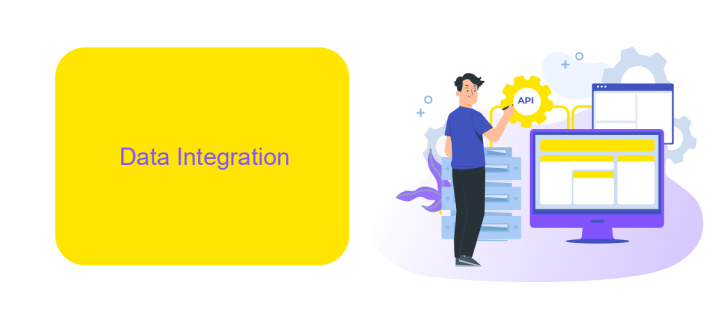Data Integration vs Data Migration
In the rapidly evolving landscape of data management, understanding the distinctions between data integration and data migration is crucial for businesses aiming to optimize their data strategies. While both processes involve handling data, they serve different purposes and require distinct approaches. This article delves into the key differences, benefits, and challenges of data integration and data migration, helping you make informed decisions for your organization.
Introduction
In today's data-driven world, understanding the differences between data integration and data migration is crucial for businesses aiming to optimize their data management strategies. While both processes involve the movement of data, they serve distinct purposes and require different approaches.
- Data Integration: This process involves combining data from different sources to provide a unified view. It’s essential for real-time analytics and decision-making.
- Data Migration: This process focuses on transferring data from one system to another, often during upgrades or system replacements.
Choosing the right approach depends on your business needs. For seamless data integration, tools like ApiX-Drive can automate the process, connecting various applications and ensuring data consistency. On the other hand, data migration is often a one-time effort, requiring meticulous planning to avoid data loss or corruption. Understanding these differences helps in making informed decisions, ultimately enhancing your data management capabilities.
Data Integration

Data Integration refers to the process of combining data from different sources to provide a unified view. This practice is essential for businesses that rely on multiple data streams, such as customer information, sales data, and market trends, to make informed decisions. By integrating data, organizations can break down data silos, ensuring that all departments have access to the same information, which enhances collaboration and efficiency.
One of the key aspects of successful data integration is the use of automation tools and services like ApiX-Drive. ApiX-Drive simplifies the integration process by allowing users to connect various applications and data sources without needing extensive technical expertise. With its user-friendly interface and robust functionality, businesses can quickly set up data flows, ensuring that data is accurate and up-to-date across all platforms. This not only saves time but also reduces the risk of errors, making ApiX-Drive an invaluable tool for any organization looking to streamline its data integration efforts.
Data Migration

Data migration involves the process of transferring data between different storage types, formats, or computer systems. This is often necessary when organizations upgrade systems, consolidate data warehouses, or move to cloud-based solutions. The goal is to ensure that data remains accurate, accessible, and functional in the new environment.
- Planning: Define the scope, schedule, and resources needed for the migration.
- Data Assessment: Evaluate data quality and structure to identify potential issues.
- Mapping: Create a detailed mapping plan to guide data transformation and transfer.
- Testing: Conduct rigorous testing to validate data accuracy and integrity.
- Execution: Perform the actual data transfer, often in stages to minimize disruption.
- Validation: Verify that the migrated data meets all requirements and functions correctly.
- Maintenance: Monitor and maintain the new system to ensure ongoing data integrity.
Using services like ApiX-Drive can significantly streamline the data migration process. ApiX-Drive offers automated tools for data transfer, ensuring that data is accurately mapped and securely transferred between systems. This reduces the risk of data loss and minimizes downtime, making the migration process more efficient and reliable.
Comparison of Data Integration and Data Migration

Data integration and data migration are critical processes in managing information within organizations, yet they serve distinct purposes. Data integration involves combining data from different sources to provide a unified view, facilitating real-time access and analysis. This process is essential for businesses looking to leverage diverse data sets for better decision-making.
On the other hand, data migration involves the transfer of data from one system to another, often during upgrades or system consolidations. This process ensures that data remains consistent and accurate across platforms, minimizing disruptions during transitions.
- Data Integration: Combines data from multiple sources.
- Data Migration: Transfers data between systems.
- Integration Tools: Services like ApiX-Drive simplify integration.
- Migration Focus: Ensures data consistency and accuracy.
While both processes are essential, they address different needs. Data integration enhances data accessibility and usability, whereas data migration focuses on the seamless transition of data between systems. Utilizing tools like ApiX-Drive can streamline data integration, making it easier for businesses to connect various data sources and improve overall efficiency.
- Automate the work of an online store or landing
- Empower through integration
- Don't spend money on programmers and integrators
- Save time by automating routine tasks
Conclusion
In conclusion, while both data integration and data migration are critical processes in managing data within organizations, they serve distinct purposes. Data integration focuses on combining data from different sources to provide a unified view, enabling better decision-making and operational efficiency. On the other hand, data migration involves transferring data from one system to another, often during system upgrades or consolidations, ensuring data consistency and accessibility in the new environment.
Understanding the differences and applications of these processes is crucial for organizations aiming to optimize their data management strategies. Tools like ApiX-Drive can significantly streamline the process of data integration by automating data flows between various platforms, reducing manual effort and minimizing errors. Leveraging such services can enhance the effectiveness of data integration projects, ultimately leading to more informed business decisions and improved organizational performance.
FAQ
What is the main difference between data integration and data migration?
When should I use data integration instead of data migration?
Can data integration and data migration be used together?
What tools can help with automating data integration processes?
What are the key challenges in data migration?
Apix-Drive will help optimize business processes, save you from a lot of routine tasks and unnecessary costs for automation, attracting additional specialists. Try setting up a free test connection with ApiX-Drive and see for yourself. Now you have to think about where to invest the freed time and money!


